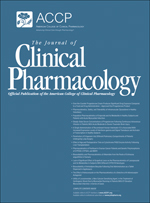
“Cannabis sativa, commonly called hemp, has thousands of years-long history of medical use. Cannabis extracts were widely used in Europe and North America for their therapeutic value as sedatives, hypnotics, analgesics, muscle relaxants, and anticonvulsant agents. However, cannabis was removed from British and American Pharmacopoeias in 20th century, partially due to politic bias. Although prohibited, many patients were nevertheless self-medicating to obtain therapeutic benefits from cannabis for various conditions, including AIDS wasting syndrome, multiple sclerosis (MS) and spinal injuries. More recently, a growing interest in the therapeutic effects of cannabis has developed following the isolation of cannabinoids, the principal chemical compounds of cannabis, as well as the discovery of endocannabinoids and their cognate receptors in humans. These advances supported legalisation and wide-spread use of cannabis for therapeutic purposes in many countries.
There has been an escalating interest in the medicinal use of Cannabis sativa in recent years. Cannabis is often administered orally with fat-containing foods, or in lipid-based pharmaceutical preparations. However, the impact of lipids on the exposure of patients to cannabis components has not been explored. Therefore, the aim of this study is to elucidate the effect of oral co-administration of lipids on the exposure to two main active cannabinoids, Δ9-tetrahydrocannabinol (THC) and cannabidiol (CBD). In this study, oral co-administration of lipids enhanced the systemic exposure of rats to THC and CBD by 2.5-fold and 3-fold, respectively, compared to lipid-free formulations. In vitro lipolysis was conducted to explore the effect of lipids on the intestinal solubilisation of cannabinoids. More than 30% of THC and CBD were distributed into micellar fraction following lipolysis, suggesting that at least one-third of the administered dose will be available for absorption following co-administration with lipids. Both cannabinoids showed very high affinity for artificial CM-like particles, as well as for rat and human CM, suggesting high potential for intestinal lymphatic transport. Moreover, comparable affinity of cannabinoids for rat and human CM suggests that similar increased exposure effects may be expected in humans. In conclusion, co-administration of dietary lipids or pharmaceutical lipid excipients has the potential to substantially increase the exposure to orally administered cannabis and cannabis-based medicines. The increase in patient exposure to cannabinoids is of high clinical importance as it could affect the therapeutic effect, but also toxicity, of orally administered cannabis or cannabis-based medicines.”
https://www.ncbi.nlm.nih.gov/pmc/articles/PMC5009397/










